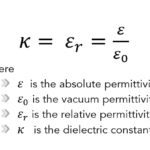Uncover the intricacies of the Cherenkov Radiation formula, its physical interpretation, applications, and an example calculation.
Understanding the Cherenkov Radiation Formula
The Cherenkov radiation formula, integral to understanding the Cherenkov effect, is expressed as:
I(ω) = (e^2/4πε0) * (1/c) * β^2 * sin^2(θ) * dω
Where:
- I(ω) represents the radiation intensity per unit frequency range.
- e is the electron charge.
- ε0 is the permittivity of free space.
- c is the speed of light.
- β is the particle’s velocity divided by the speed of light.
- θ is the Cherenkov angle – the angle at which the radiation is emitted relative to the direction of the particle.
- dω is the frequency range.
The Physics Behind the Cherenkov Radiation Formula
At its core, the Cherenkov radiation formula underpins the interaction of charged particles with a dielectric medium. When a charged particle, such as an electron, moves faster than light can travel in that medium, it polarizes the nearby medium’s atomic electrons. When these polarized electrons return to their ground state, they emit radiation – the so-called Cherenkov radiation.
The formula’s key aspect is the β^2sin^2(θ) term. This term only becomes significant when the velocity of the particle exceeds the phase velocity of light in the medium, i.e., β>1/n, where n is the refractive index. Hence, Cherenkov radiation is fundamentally tied to the relative speeds of the particle and light in the medium.
Significance of the Cherenkov Radiation Formula
The formula has numerous practical applications, from particle physics to nuclear safety. The most iconic of these is perhaps the blue glow in underwater nuclear reactors, a direct result of Cherenkov radiation. In particle physics, it allows the detection and velocity measurement of high-energy particles. By studying the amount and angle of Cherenkov radiation, physicists can deduce information about the original particle’s properties.
Overall, the Cherenkov radiation formula provides an elegant mathematical framework that encapsulates a fascinating quantum mechanical phenomenon and serves as an essential tool in our technological arsenal.
Example Calculation Using the Cherenkov Radiation Formula
Let’s assume we have a high-energy electron moving through a medium with a refractive index of 1.5. If the speed of the electron is 0.8 times the speed of light in vacuum (c), we can calculate the Cherenkov angle (θ) and the intensity of the radiation within a given frequency range (dω).
Firstly, the particle’s velocity as a fraction of the speed of light, denoted as β, is given as 0.8. According to the condition for Cherenkov radiation, β > 1/n. As 0.8 > 1/1.5, the particle will indeed emit Cherenkov radiation.
The Cherenkov angle (θ) is given by the relation:
cos(θ) = 1/(βn)
Substituting the values β = 0.8 and n = 1.5:
cos(θ) = 1/(0.8 * 1.5)
From this, we can calculate θ.
For the intensity of the radiation, the Cherenkov radiation formula is applied:
I(ω) = (e^2/4πε0) * (1/c) * β^2 * sin^2(θ) * dω
By inserting the known values into the equation, including the electron charge (e), the permittivity of free space (ε0), the speed of light (c), the Cherenkov angle (θ), and the frequency range (dω), we can obtain the radiation intensity (I).
Through this calculation, we can witness how the Cherenkov radiation formula provides a practical approach to determining the radiation properties of a charged particle moving through a dielectric medium.



